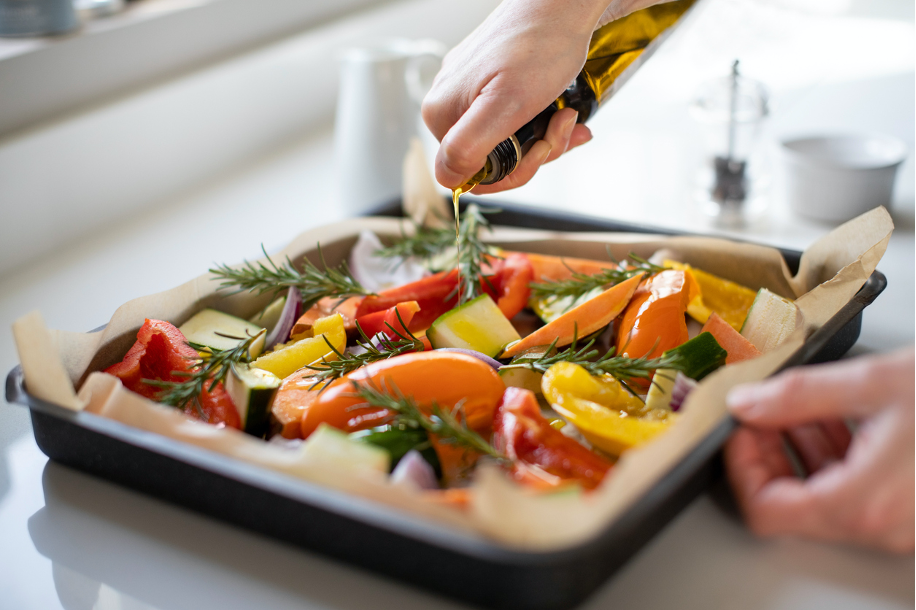Returning to Work
As we continue into Spring 2021, more employees are beginning to return to work and more schools are increasing the number of in-person school days. While this is a much-welcomed step back toward “normal” life, there will be an adjustment period as we all get used to a busier schedule.
Cooking healthy meals was easier when everyone was at home for all three meals. We had extra hands at home to help with meal prep and more time to plan and cook. However, with the right planning and preparation, you can seamlessly return to work and keep up your healthy cooking!
Healthy Cooking Tips
Often times, cooking a healthy meal can seem overwhelming if we already feel rushed or stressed. To help keep you on track and reduce any added stress you may feel, keep these simple healthy cooking tips in mind:
- Cook with “good” fats: According to Harvard T.H. Chan School of Public Health, unsaturated fats are considered “good” fats because they can improve blood cholesterol levels, ease inflammation and stabilize heart rhythms. When cooking, opt for extra virgin olive oil instead of butter. Also, try incorporating avocados, nuts, and seeds into your dishes.
- Include more Omega-3 fatty acids: Omega-3 fatty acids are essential nutrients that are important in preventing and managing heart disease. Try using oils that provide omega-3 fatty acids, such as flaxseed oil, and add walnuts to your salads or baked dishes. You can also add one or two 4-ounce portions of fatty fish to your meal plan each week, such as salmon, lake trout, albacore tuna (in water, if canned), mackerel or sardines.
- Avoid frying: Instead of frying, try sautéing with a small amount of extra virgin olive oil, baking, broiling, or roasting your vegetables and lean meats. Pro tip: drain the fat off of cooked, ground meat for a leaner meal!
- Load up on vegetables: Your side dishes don’t have to be complicated! Some of the healthiest and most flavorful sides are simply roasted or sautéed vegetables. One of our favorites is thinly sliced zucchini and mushrooms with just a little bit of olive oil and pepper.
- Go unrefined: Choose whole grains instead of refined grains at the grocery store. This ensures you are getting more fiber, B vitamins, magnesium, zinc and other nutrients.
- Reduce sugar and sodium intake: Aim to buy mostly fresh ingredients for your meals and be mindful of food labels when buying any packaged foods. Then, focus on flavoring your dishes with fresh herbs, spices, and citrus instead of salt, sauces, or dressings.
- Remember portion control: If you are struggling to come up with a dinner idea, think about your plating.You want half the plate to be filled with non-starchy vegetables of all colors. Then 1/4 should be dedicated to lean protein, about the size of a deck of cards, and the last 1/4 should be made up of whole grains.
- One-pot meals: For really busy nights, one pot meals are your friend! Believe it or not, there are some plenty of healthy, one pot meal recipes that are quick to make and have very little clean up! Two of our favorite recipes include chicken and vegetable curry couscous and Spanish chickpea and brown rice!
- Take-out or delivery: No matter how much we plan, some nights get away from us or we just need a break. For those cases, check out our previous blog post for tips on ordering healthy take-out and delivery options!
Following these tips will not only help you enjoy healthier meals, but they will also help you on your journey to maintaining a healthy lifestyle! Click here to learn more!



